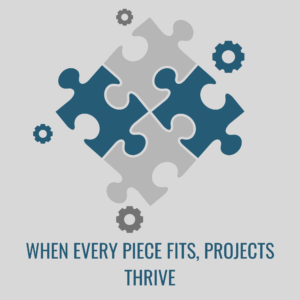The Hidden Cost of a Bad Hire in the AEC Industry
In the Architecture, Engineering, and Construction world, project schedules are tight, budgets are lean, and client trust is everything. Yet one of the most expensive mistakes firms make isn’t tied to concrete or steel… it’s tied to people. A single bad hire can quietly erode profitability, morale, and reputation faster than most firms realize.
The Ripple Effect of a Poor Hiring Decision
In an industry where most revenue is tied directly to billable hours, a poor hiring decision can ripple through multiple projects, teams, and client reputations. For example, if an underperforming engineer bills at 70% efficiency compared to their peers, a firm can lose tens of thousands of dollars annually in lost productivity alone. Factor in rework, project delays, and the staff time spent correcting mistakes, and the true cost often exceeds 1.5x the employee’s salary!
Recruiting, Onboarding, and Turnover Costs
Recruiting, onboarding, and training costs add to the burden. It typically takes three to six months to fully integrate a new AEC professional into team/project workflows. When that person leaves prematurely or fails to meet expectations, the cycle restarts… Inevitably burning valuable leadership time that could have been spent developing business or mentoring strong team members.
Collaboration Challenges and Leadership Strain
AEC work is inherently collaborative, and that collaboration with the project teams and within other verticals or disciplines is even more critical. Every project depends on seamless coordination between disciplines like architects, civil engineers, surveyors, structural designers, MEP engineers, and even overhead support staff. When one person struggles, it forces others to pick up the slack, which can strain relationships and slow delivery. Senior leaders often find themselves performing “triage” like reassigning tasks, just to meet and protect deadlines.
The Cultural and Morale Impact
Beyond lost time, morale can drop quickly. Talented staff notice when poor performers are tolerated, and high achievers may disengage or leave. Over time, the culture shifts from “we deliver excellence” to “we just get it done.” That slow erosion of standards is far harder to recover from than any single turnover event.
How Bad Hires Undermine Client Trust
AEC firms build their brands on precision and reliability. A bad hire who delivers subpar work can directly harm client trust. Missed deadlines, inaccurate drawings, or field coordination errors not only jeopardize current contracts but can also damage long-term relationships. In a small and networked industry, word travels fast. Clients talk to one another, and reputations hinge on consistency. It’s often said that firms lose future work not because of one bad project, but because of one bad project manager. In some cases, it may not even be that PM, but one bad hire on the project team that caused unnecessary stress on the project and caused timelines to be missed, budgets to be busted, or sub-par QA/QC to be sent out the door!
Recruiting with Intent
Avoiding bad hires requires more than checking technical boxes. Effective AEC recruiting integrates cultural and contextual fit. Firms should evaluate candidates through a blend of behavioral interviewing, project-based scenario discussions, and peer review input from multiple disciplines.
Practical Steps Toward Better Hiring
Structured interviews: Use consistent evaluation rubrics focused on collaboration, problem-solving, and accountability. Use a behavior-based approach when asking questions!
Peer involvement: Have candidates meet cross-discipline team members to gauge communication and adaptability.
Cultural alignment: Assess values around teamwork, responsiveness, and continuous improvement not just portfolio highlights. Remember, you are hiring a person, and not a resume. For example, one book to build a “recruitment culture” around is Patrick Lencioni’s book The Ideal Team Player, which really breaks hiring decisions down to just three words: Are they Hungry, Humble, and Smart.
The Long-Term Value of the Right Hire
The cost of a bad hire is measurable, but the benefit of the right hire is exponential! Strong talent attracts more of the same, boosts client confidence, and stabilizes project delivery. Firms that treat recruiting as a strategic function, and not an administrative one, build economic resilience, a strong client reputation, and a culture of excellence simultaneously.
Conclusion: Recruiting as a Competitive Advantage
Every new hire shapes not just project outcomes, but the firm’s identity in the marketplace. Recruiting carefully isn’t an “overhead task”… it’s a competitive advantage!







